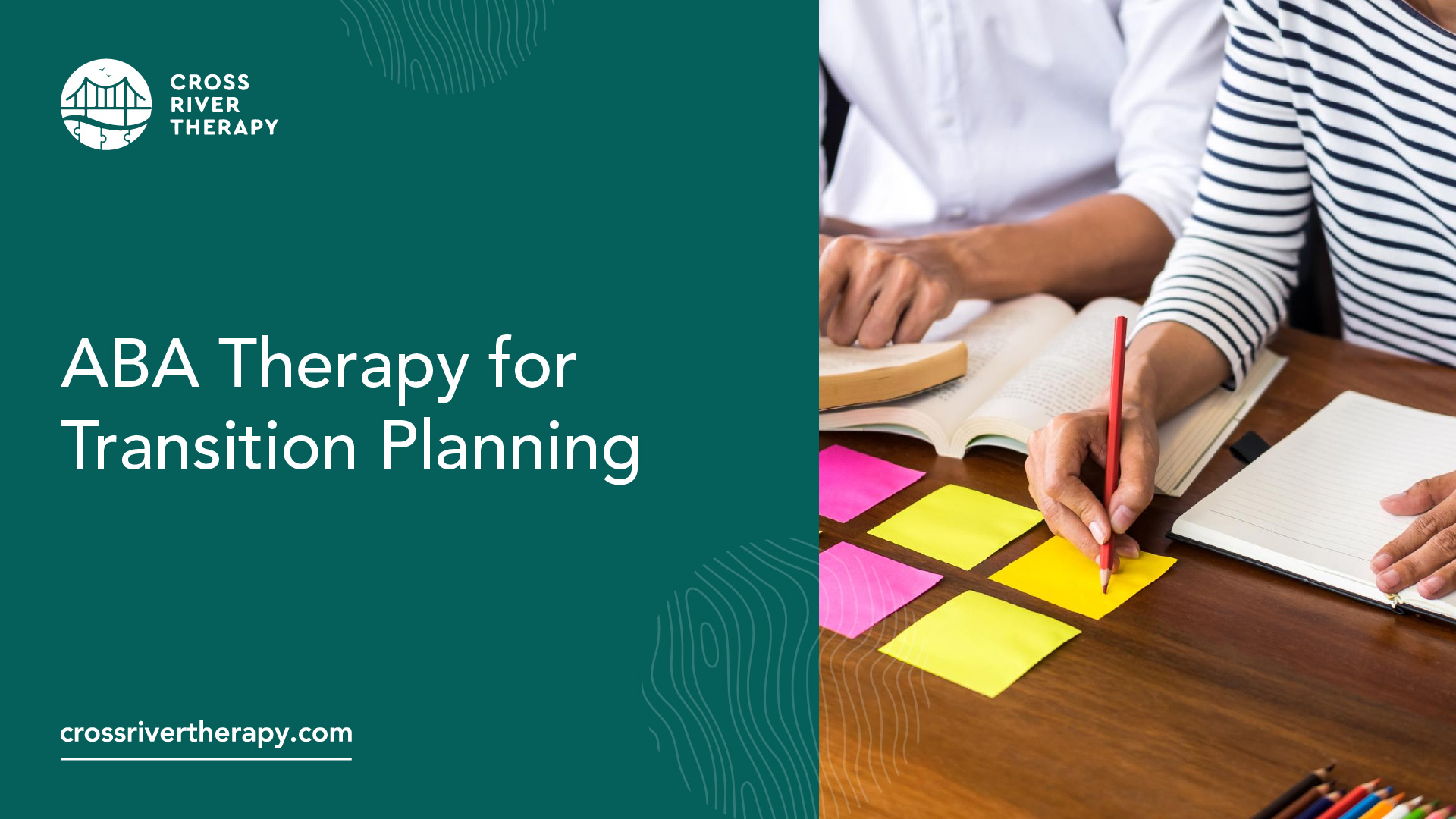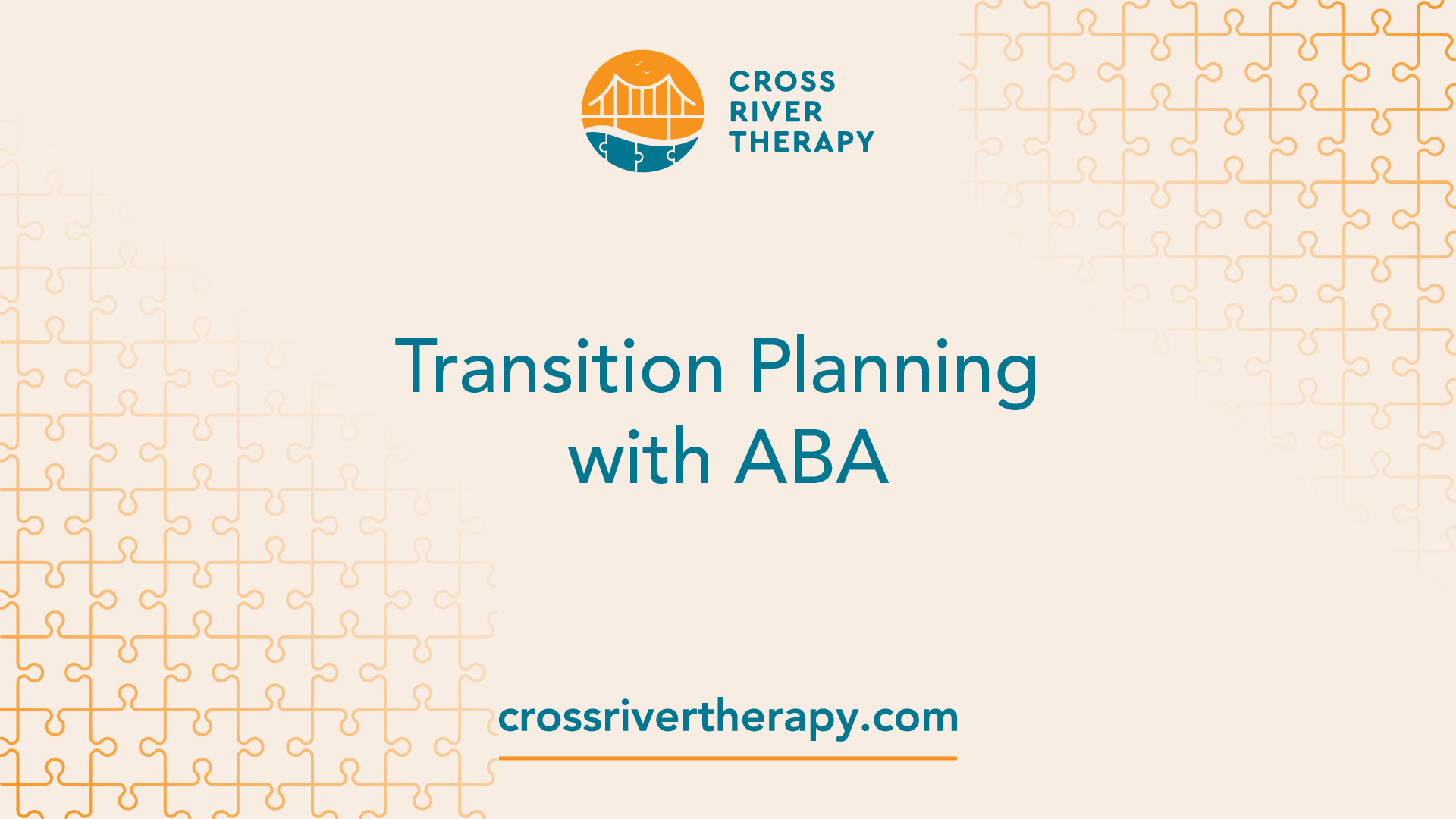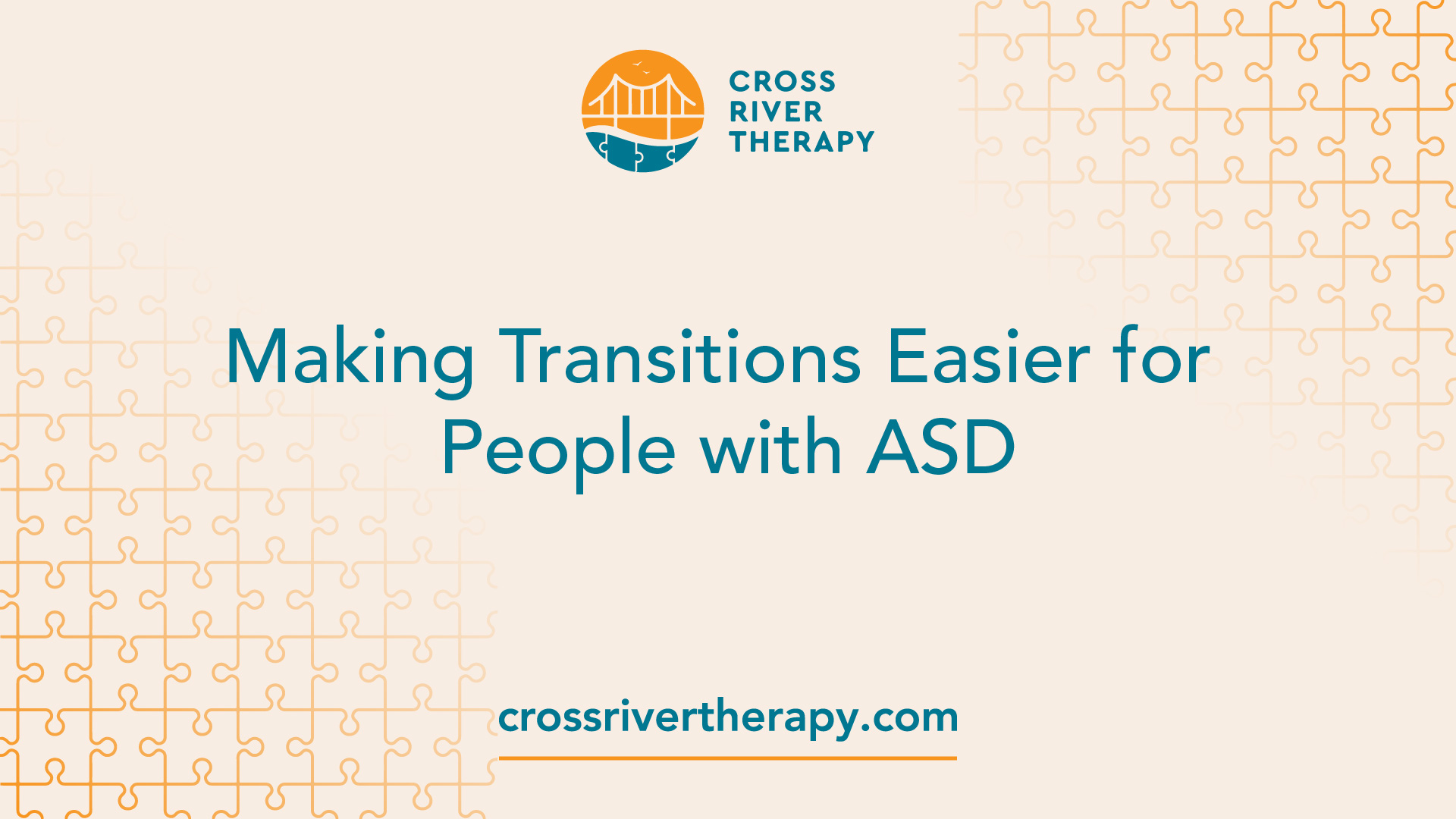ABA Therapy for Transition Planning
ABA therapy supports smooth transitions by equipping individuals with skills needed for new environments and greater independence.

Getting the Hang of ABA Therapy
ABA Therapy, or Applied Behavior Analysis, is a smart way to tackle behavioral issues using tried-and-true methods. It’s all about teaching good habits and cutting out the bad ones. Each plan is custom-made to fit the person’s needs.
The Nuts and Bolts of ABA Therapy
ABA Therapy is based on solid research and proven techniques. It breaks down big tasks into bite-sized pieces, making them easier to learn.
Therapists use tricks like positive reinforcement (think rewards), prompting, and shaping to help change behavior. Keeping track of progress is key, so they collect data to see what’s working and tweak the plan as needed.
Why ABA Therapy Rocks?
ABA Therapy is a game-changer, especially for kids with autism. It helps them build important social, functional, and emotional skills. But the perks don’t stop there. Studies show that kids who get ABA Therapy often do better in communication, socializing, daily tasks, and even school [2].
Because ABA Therapy is so personalized, it zeroes in on what each person needs most. This means progress happens at a pace that’s just right for them.
Plus, it gives parents and caregivers the tools they need to support their child’s growth and help them use their new skills in everyday life.
Knowing the basics of ABA Therapy and its benefits can help parents and caregivers decide if it’s the right fit for their child.
Next, we’ll look at how ABA Therapy works in schools, how it helps with transitions, and the different techniques used to get the best results for kids with autism.
ABA Therapy in Schools
ABA therapy is a game-changer for students with autism, helping them shine both in the classroom and on the playground. Schools play a big part in making sure these kids get the support they need to succeed.
Let's break down the rules and funding that make ABA therapy in schools possible.
Rules for ABA in Schools
The Individuals with Disabilities Education Act (IDEA) says public schools must provide the right educational services to students with disabilities, including autism. This law ensures kids with autism can access a Free Appropriate Public Education (FAPE) that fits their needs.
If there's enough proof that ABA therapy is necessary for a child, schools have to provide it [3].
Deciding if ABA therapy goes into a student's Individualized Education Program (IEP) involves a thorough look at the child's strengths and challenges. If the evaluation shows ABA therapy is needed, it becomes a must-have service from the school.
Funding for ABA Therapy
Public schools must provide ABA therapy if it's needed under IDEA. The money for this usually comes from the school district's special education budget.
This budget is set aside to help students with disabilities, including paying for ABA therapy.
School districts juggle their budgets to make sure they can offer ABA therapy to students who need it. This might mean hiring ABA therapists, training school staff, and getting the right materials for effective ABA sessions.
Funding methods differ between districts, but the goal is the same – to help students with autism succeed in school.
By following IDEA's rules and securing the needed funds, schools can provide ABA therapy to students with autism. This teamwork between schools, parents, and professionals creates an inclusive environment where students with autism can thrive academically and learn essential life skills.
Want to know more about how ABA therapy helps in inclusive education? Check out our article on ABA therapy and inclusive education.
Transition Planning with ABA

Transition planning is a big deal for kids with Autism Spectrum Disorder (ASD). It helps them get ready for school, work, college, and living on their own.
ABA therapy can be a game-changer in making these transitions smoother. Let's break down why transition planning matters and how teamwork makes it work.
Why Transition Planning Matters?
Transition planning is like a roadmap for kids with ASD. It helps them build the skills they need to tackle different stages of life. Experts say it's best to start planning around 13 or 14 years old. This gives kids plenty of time to learn and explore their options.
Starting early means kids can get the right help for school, job skills, and living on their own. Think of ABA therapy as a bridge to a regular school setting, where kids can use the skills they've picked up.
Transition planning also helps set future goals. It identifies the supports, accommodations, and resources needed for a smooth transition. By tackling potential challenges ahead of time, kids with ASD can face new environments and situations with more confidence.
Teamwork for a Smooth Transition
Teamwork is key for a successful transition. ABA providers, teachers, parents, professionals, and community groups all need to work together. Early and ongoing communication helps build strong relationships and ensures the transition plan covers all bases [3].
The planning team should include everyone who cares about the child's success. This means parents, ABA therapists, teachers, job experts, and other pros who can offer their insights.
Teamwork ensures that all viewpoints are considered and that the child's needs and goals are front and center.
Regular meetings and open communication are crucial. They allow team members to share updates, progress, and address any issues that come up.
This collaborative approach creates a supportive network that advocates for the child's needs.
By working together, the team can create a detailed transition plan that meets the unique needs of the child with ASD. This plan might include strategies, interventions, and resources to help the child succeed in different areas of adult life.
Transition planning with ABA therapy is all about teamwork. It ensures that kids with ASD have the skills, supports, and resources they need for a smooth transition. By recognizing the importance of planning and fostering collaboration, kids with ASD can confidently navigate new environments and stages of life.
Implementing ABA Techniques
When you're diving into ABA (Applied Behavior Analysis) techniques, two biggies to keep in mind are the Behavioral Momentum Theory and data-driven ABA interventions.
Behavioral Momentum Theory
So, Behavioral Momentum Theory—sounds fancy, right? This idea, cooked up by psychologist Richard J. Herrnstein in the '60s and later polished by Nathan H. Azrin and Gregory J. Madden in the '80s, is all about how behavior sticks around when different rewards are in play.
In ABA therapy, using this theory means setting up interventions that build steam and make behavior change more likely.
Here's the deal: therapists kick things off with High-P (high-probability) responses. These are the easy wins—the behaviors the person already does well and enjoys.
Think of it like warming up before a workout. By starting with these positive actions, therapists create a feel-good vibe that gets the person motivated. Once that good energy is flowing, they sneak in Low-P (low-probability) responses, which are the tougher or less fun tasks.
By mixing these in with the easier stuff, therapists can help the person tackle the harder behaviors without feeling overwhelmed.
Data-Driven ABA Interventions
Now, let's talk data. Data-driven ABA interventions are the bread and butter of effective ABA therapy. This approach is all about using numbers and facts to guide decisions and track progress.
In practice, this means therapists are constantly jotting down notes and crunching numbers on the target behaviors and how well different strategies are working. This info is gold—it shows how the person is doing, highlights trends, and helps tweak the game plan as needed.
By leaning on data, therapists can pick the best tactics for each person. It's like having a GPS for therapy, ensuring the treatment is spot-on for the individual's needs and goals.
It's worth mentioning that ABA therapy is a top-notch, evidence-based practice for folks with autism spectrum disorder (ASD). It's got the thumbs-up from big names like Autism Speaks, The Association for Behavior Analysis International, the U.S. Surgeon General, National Institute of Mental Health, and the American Psychological Association [5].
By blending Behavioral Momentum Theory with data-driven interventions, therapists can supercharge ABA therapy and help individuals hit their targets.
Making Transitions Easier for People with ASD

Transitions can be tough for folks with autism spectrum disorder (ASD). But don't worry, there are tricks to make these changes smoother. Let's chat about two big ones: visual aids and practice runs.
Visual Aids: Your Transition Sidekick
Visual aids are like magic for helping people with autism handle transitions. They give clear visual cues that make things less scary and more predictable. One popular tool is a visual schedule.
This lets people see what's coming up next and understand the order of events.
You can make a visual schedule with pictures, symbols, or words, depending on what works best. It shows the steps of the transition, making it easier to grasp. This helps reduce anxiety and makes the whole process smoother.
Besides visual schedules, other aids like social stories, visual timers, and cue cards can also help. These tools give clear info, making it easier to understand what's expected and navigate the change with more confidence.
Practice Runs: Getting Ready for the Real Deal
Practicing new routines ahead of time can be a game-changer. It helps people with autism feel more prepared and in control. This practice can ease anxiety and create a sense of predictability.
Practice runs involve simulating the transition in a safe space. For example, if the change is moving from home to school, you can practice getting ready in the morning, packing a backpack, and walking to the bus stop.
During these practice runs, give clear instructions, verbal prompts, and visual aids to help understand and navigate the transition. As they get more comfortable, you can tweak the practice to match the real deal, like timing it with the school schedule.
By adding practice runs into the mix, people with ASD can get used to upcoming changes, making the actual transition less stressful.
Wrapping It Up
Helping people with ASD through transitions means using visual aids and practice runs. Visual aids, like schedules, show the steps clearly, reducing anxiety. Practice runs let them get used to new routines, building confidence. With these strategies, transitions can be smoother and more positive.
Evidence-Based Practices
When it comes to ABA therapy for transition planning, using methods backed by solid research is key. These practices have been proven to help folks with Autism Spectrum Disorder (ASD).
Let's break down how federal laws tie into these practices and how high-leverage strategies can boost ABA therapy.
Federal Laws and Evidence-Based Practices
Two big federal laws, the Every Student Succeeds Act (ESSA) and the Individuals with Disabilities Education Act (IDEA '04), require that educators use proven academic and behavioral methods [6]. These laws stress the need for interventions that have been shown to work through solid research.
By using evidence-based practices in ABA therapy for transition planning, parents and professionals can trust that the strategies are grounded in research and are more likely to succeed. These practices keep evolving with new research, ensuring that people with ASD get the best possible interventions.
Using High-Leverage Practices
High-leverage practices (HLPs) are powerful strategies that make a big difference in learning and development. In ABA therapy for ASD, there's a lot of overlap between HLPs and evidence-based practices [6].
Using HLPs in transition planning can make ABA interventions even more effective.
Here are some high-leverage practices that can be used in ABA therapy:
- Small-group instruction: Teaching in small groups allows for focused, personalized support, boosting engagement and learning.
- Functional behavior assessments: Understanding why challenging behaviors happen helps create effective behavior intervention plans.
- Peer-assisted strategies: Encouraging interactions with peers and giving opportunities for peer support can build social skills and inclusion.
- Organized and supportive learning environments: Creating structured, predictable, and supportive settings can make learning easier and reduce anxiety.
By weaving high-leverage practices into ABA therapy, professionals can make interventions more effective and help individuals with ASD transition smoothly. These practices, combined with evidence-based strategies, offer a well-rounded and research-backed approach to transition planning.
When looking for ABA therapy for transition planning, it's crucial for parents to work with professionals who prioritize evidence-based practices and stay updated on the latest research. This way, parents can ensure their child gets the best interventions to support their move to new environments and experiences.
FAQs
How can ABA Therapy support transition planning?
ABA therapy supports transition planning by using behavior analysis techniques to teach and reinforce skills needed for successful transitions, such as self-care, social interactions, and vocational skills.
How does ABA Therapy address individual needs during transition planning?
ABA therapy is customized to each individual’s needs, focusing on specific skills and behaviors that are essential for the transition. This personalized approach ensures that the therapy aligns with the person’s goals and challenges.
What strategies are used in ABA Therapy for effective transition planning?
Strategies include setting clear goals, breaking tasks into manageable steps, using visual supports, providing consistent reinforcement, and practicing new skills in real-life scenarios to ensure readiness for transition.
How can parents and caregivers be involved in transition planning?
Parents and caregivers play a crucial role by providing input on their child’s needs and goals, participating in therapy sessions, and supporting the implementation of strategies at home and in the community.
What role do ABA therapists play in transition planning?
ABA therapists develop and implement individualized plans, provide direct instruction and support, monitor progress, and adjust strategies as needed to help individuals navigate transitions successfully.
How can schools and community collaborate with transition planning?
Schools and community programs can collaborate by sharing information about the individual’s goals and needs, integrating ABA strategies into their programs, and providing opportunities for practice and skill development.
What are common challenges in transition planning with ABA Therapy?
Common challenges include resistance to change, difficulty acquiring new skills, and limited opportunities for practice. These challenges can be addressed through gradual exposure, ongoing support, and tailored interventions that focus on the individual’s strengths and needs.
References
[1]: https://www.adinaaba.com/post/behavioral-momentum-theory-in-aba-therapy
[2]: https://theautismimpactcircle.com/what-is-aba-therapy-everything-you-need-to-know/
[4]: https://www.myteamaba.com/resources/transition-planning-for-autism
[5]: https://www.ncbi.nlm.nih.gov/pmc/articles/PMC9114057/
[6]: https://iris.peabody.vanderbilt.edu/module/asd2/cresource/q1/p02/



